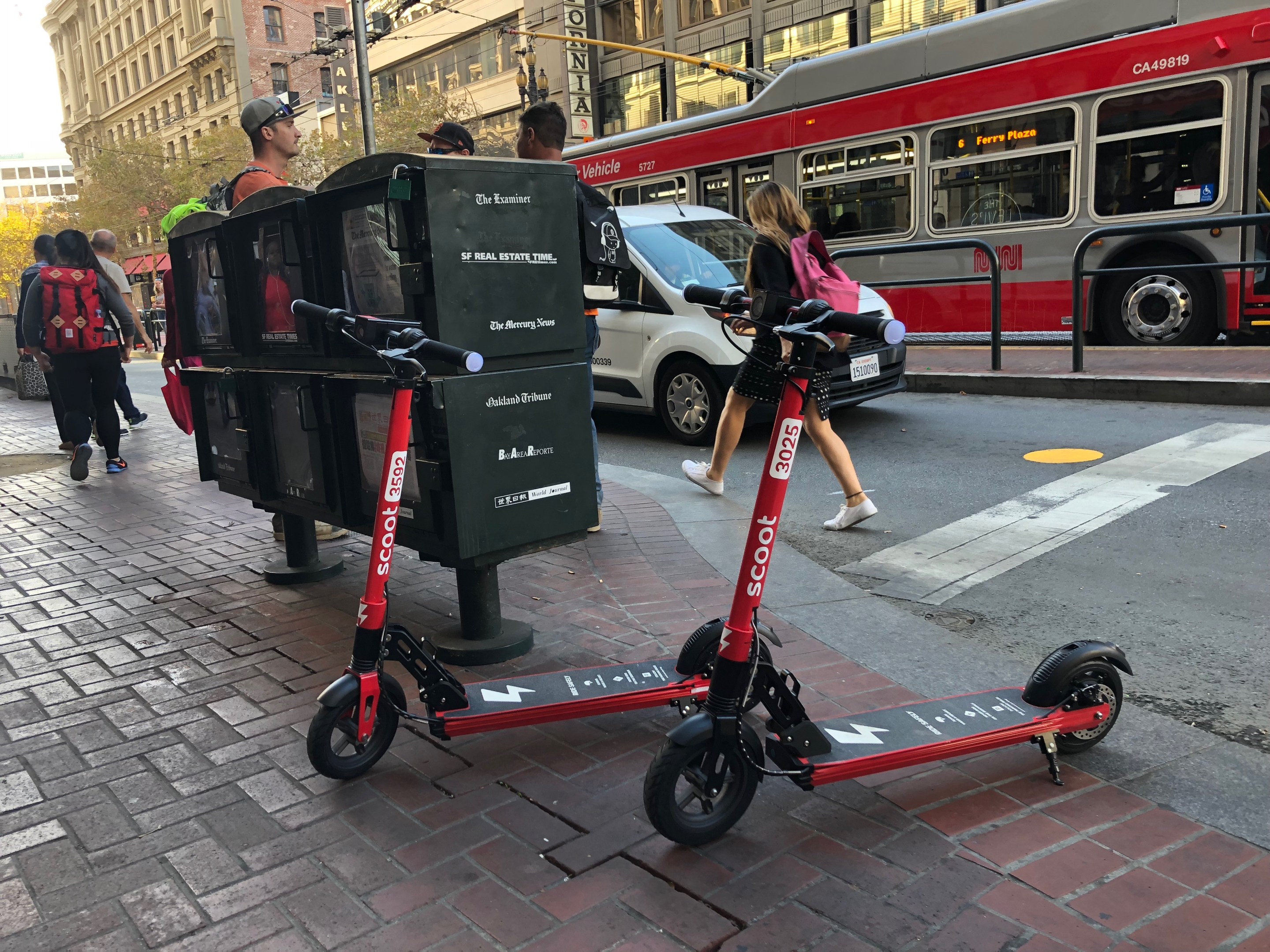Note: GJEL Accident Attorneys regularly sponsors coverage on Streetsblog San Francisco and Streetsblog California. Unless noted in the story, GJEL Accident Attorneys is not consulted for the content or editorial direction of the sponsored content.
The LA Times ran a feature last week with the click-baity headline "Scooter start-up promised to serve a whole city. Then it cut out two poor areas."
From the story, penned by Johana Bhuiyan:
The company has drawn a red line around the centrally located but poverty-ravished Tenderloin and in parts of nearby Chinatown, preventing customers from dropping off scooters there. The start-up, acquired in June by Santa Monica-based Bird, says its no-parking zones are “in compliance with the kick scooter pilot program” overseen by SFMTA. But the Tenderloin, which is home to a large homeless population, and Chinatown are two of the seven “communities of concern” that Scoot pledged to prioritize serving as a condition of joining the pilot program.
Bhuiyan went out of her way to frame the story as a modern version of red lining. There was a response on social media of course, followed by communications among Streetsblog's own editors, sharing the outrage of such a profound social injustice.
But as soon as I saw the map in the LA Times story, I was skeptical. I checked out the situation in Oakland for comparison:

The red zones in Oakland are consistent with something Ryan Russo, former head of Oakland's DOT, said during a SPUR talk earlier this year: the city asked scooter companies not to allow them to accumulate around Lake Merritt, since the path around the lake and estuary gets crowded.
There are also an abundance of scooters in East and West Oakland. And in San Francisco, where there have been firmer caps on scooter deployment, there are plenty of scooters in other "communities of concern," such as the Bayview:

It seems unfathomable that Scoot decided to deploy scooters miles from downtown, in the Bayview and elsewhere, but locked out the Tenderloin and Chinatown in an act of discrimination.
I contacted Scoot and their PR department got back to me with a Medium post by the company's founder, Michael Keating:
When we expanded the parking area for our Kick scooter service a few months ago, we began to hear concerns from the community and neighborhood organizations we have maintained relationships with for years. Specifically, organizations and community leaders in Chinatown and the Tenderloin wondered what would happen if our scooters started parking on their sidewalks.
It was the "Chinatown Community Development Center... plus the Tenderloin and Lower Polk Community Benefits District" who asked for the "red line," wrote a representative for Scoot.
"I assumed right away that a 'community group' requested this," wrote Kyle Grochmal, an advocate for safe streets and occasional Streetsblog contributor, adding that Bhuiyan "...doesn't understand our city's politics."
The San Francisco Examiner's Joe "Fitz" Rodriguez beat us to the punch on confirming that community groups had indeed asked for this. From his story, "Did Scoot ‘redline’ SF neighborhoods? Chinatown group says ‘we asked for it’":
Scoot drew artificial boundaries on its app around the Tenderloin and parts of Chinatown, the newspaper reported, creating these “no parking” zones that effectively deprived poor neighborhoods of e-scooters. While this earned the company a public black eye, and many online described the practice as allegedly racist and classist, one Chinatown group used different words to describe the alleged redlining: Thank you. “We asked for it, and Scoot listened,” said Queena Chen, co-chair of the transportation advocacy group Chinatown TRIP.
On Friday the LA Times also published a follow up, including Scoot's response, but continued the framing that this was classist or racist:
In defense of its practice of excluding two of San Francisco’s neediest neighborhoods [emphasis added], San Francisco-based mobility company Scoot says local community leaders and organizations asked it not to allow riders to park their scooters in those areas.
And:
Keating’s response came a day after The Times revealed [emphasis added] the company, acquired by Santa Monica-based Bird in June, was prohibiting riders from parking their scooters in the Tenderloin and parts of Chinatown, with the no-parking zones marked in its app by a red border.
Actually, anybody who uses Scoot or Bird can "reveal" the no-parking zones. The apps also allow anyone to explore scooter distribution in economically depressed districts. It is true that in San Francisco a disproportionate number of scooter users are white, but SFMTA may have helped create that situation by limiting scooter deployment before studying a more organic distribution (now at 2,500 scooters, up from 1,250). Streetsblog has a request in to Oakland DOT for their numbers. Meanwhile, Scooters are probably still too new for data to say anything definitive about their use, but there's evidence that they are used relatively evenly across different ethnic and economic boundaries in other American cities.
Either way, the only clear relationship between Scoot's "red lining" and the racial red lining of decades past is literally just the color - which has now been changed to black in San Francisco on Scoot's app.





